TABITO Arts and Culture Navigator
Shakuhachi performer, songwriter and composer Masaki Nakamura
Uwajima Ambassador, born in Uwajima, Ehime Prefecture
Affiliated units: Sakuramen, Ren, HANABI, Zangetsu
profile
He encountered the shakuhachi at the age of 17 and was so captivated by its charm that he went on to study shakuhachi at the Department of Traditional Japanese Music, Faculty of Music, Tokyo University of the Arts.
He won first place in the 6th Shakuhachi Newcomer Championship, the 3rd Tokyo Traditional Japanese Music Competition, and the 2nd Japanese and Western Instrument Group Contest.
He has received the Yomiuri Shimbun Award, the Japan Folk Song Association Award, the Uwajima Grand Prize, the Hase Kengyo Memorial Kumamoto National Japanese Music Competition Excellence Award, and the Choko Cup Excellence Award.
Winner of the 14th Best Debutant of the Year award.
His style, which makes use of the natural sound of the shakuhachi and moves freely between various genres, continues to fascinate many fans.
His original songs, which project the natural world and his inner world, have received high praise.
He has released 10 albums to date and participated in over 30 albums. He has been invited to perform at Suntory Hall, Ryogoku Kokugikan, the US Embassy, the French Embassy, the Irish Embassy, and more.
Collaborations with Fujiwara Dozan, Agatsuma Hiromitsu, Kawai Ikuko, Toba Ichiro, Sakamoto Fuyumi, Mizutani Chieko, Shimada Ayase, Shishu, Lime Green Orchestra, and Ruby Pas de Orchestra.
He is a lecturer at the Buddhist Adult University at Zojoji Temple.
“Shinobu” fashion model.
In 2016, he released his first solo album, “Inori,” which was broadcast on NHK and other networks. In 2017, he made his major debut with the album “Tsukihanaya” under Avex as Tsubasa Sakiyama with Sakuramen.
Sakuramen’s first album, “Hana no Daienbutai,” was released by Avex in May 2020.
[Isehara City Special] Visit to Hinata Yakushi – Column by Masaki Nakamura –
I visited Hinata Yakushi, a sacred place of Yakushi Nyorai that has long attracted worshippers, at the end of summer when cicadas were still chirping noisily.
Exposed to the sweltering heat and the hustle and bustle of the city, I suffered from mild heatstroke, but I somehow managed to stagger from Isehara Station to the foot of Hyuga Yakushi, where I was greeted by lush trees and a long stone staircase that seemed to test the worshippers.
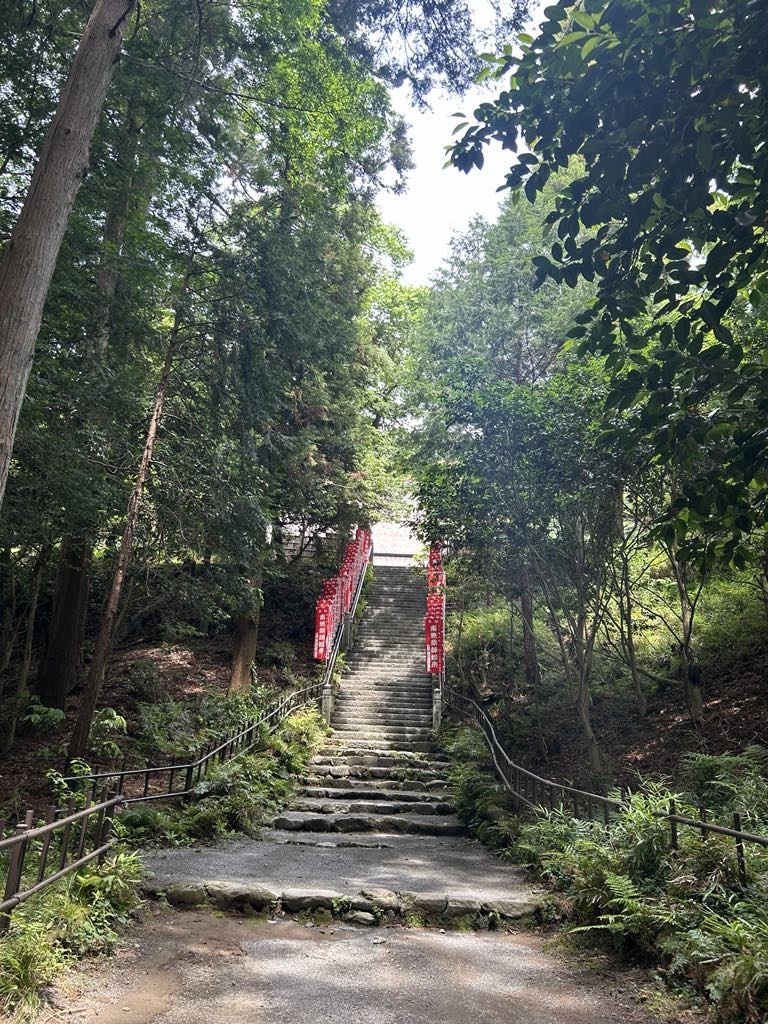
Once I finally made it to the top, sweating and trying to make up for my lack of daily exercise, I was greeted by the majestic Two Cedars, a natural monument.
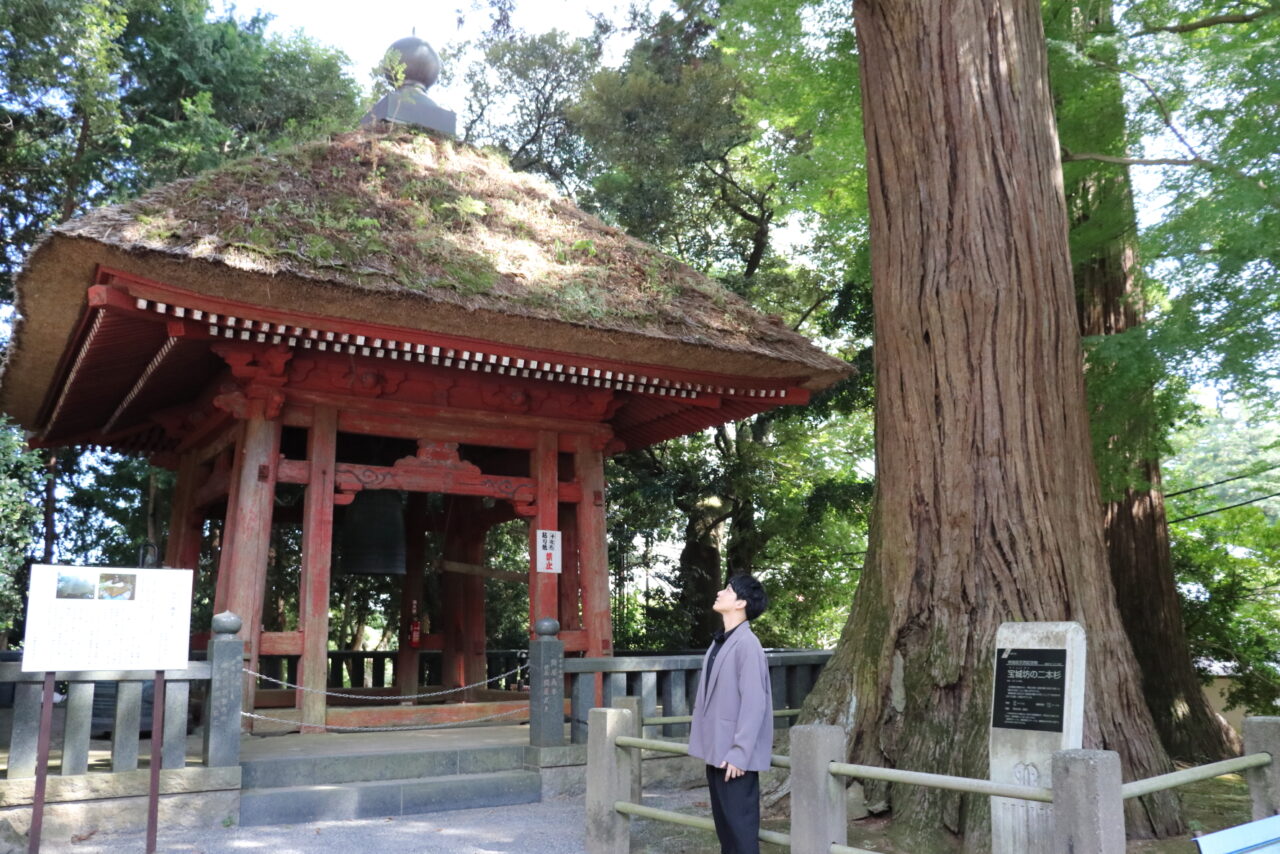
The sacred tree, standing there like the lord of the forest, provided me with an abundance of negative ions as I spent a summer simply sweltering in the concrete jungle.
Next to it stands a stone statue of Kobo Daishi wrapped in several blue flags with the words Namu Daishi Henjo Kongo written on them. The wind blowing through the temple grounds is refreshing, and it made me nod in agreement that this must be a sacred place.
Directly ahead is the Hojobo Main Hall, an Important Cultural Property, with its unique black pillars that give off a majestic atmosphere.As I approached and looked up, I saw the words “Imperially prayed.”I entered the hall with a solemn feeling, burning incense, and was greeted by Yakushi Buddha, whose face seemed stern yet somehow warm.
I was deeply humbled by the history of how they must have accepted the worries and suffering of thousands, perhaps tens of thousands, of people, and many thoughts of my own life came to mind.
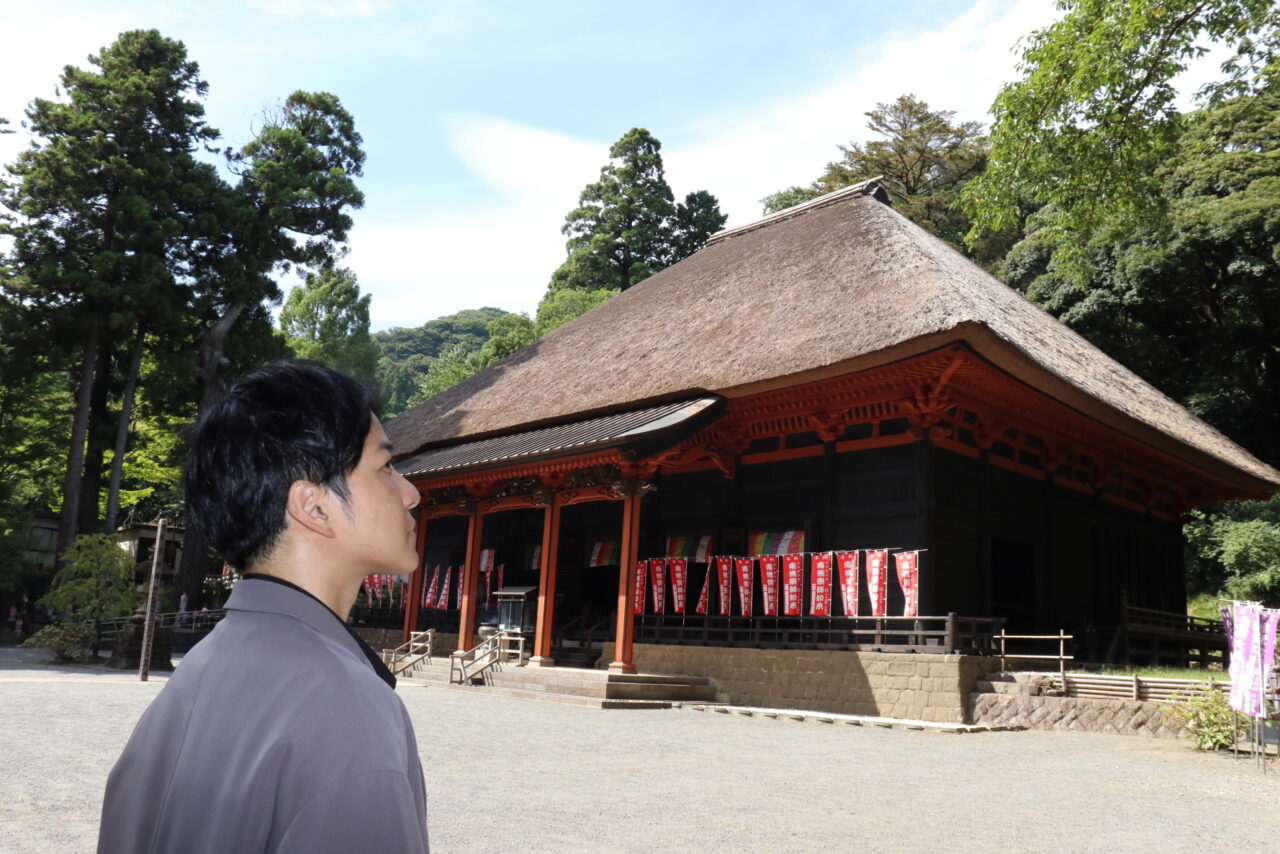
The mantra of Yakushi Nyorai, “Onkorokoro Sendarimatougi Sowaka,” means “I take refuge in you, Lord Yakushi, and please drive away the demons of illness.” As I chanted this mantra, a prayer people have repeated since ancient times, I suddenly realized that I had been suffering from heatstroke just moments before, and my body suddenly returned to normal. I felt grateful for this miraculous blessing, and at the same time, I realized that it would be impossible for a human being to continue to be worshipped by people as a Buddha who bestows benefits on this world. I also thought about the mind-boggling journey that he has taken to achieve this as a Buddha, and it felt as if I was witnessing the vastness of the universe.
The shakuhachi, the instrument I play, has been played for many years as a ritual instrument dedicated to something greater, to gods or Buddhas.
When it comes to performing, I just throw everything I have into it and focus on letting the audience hear the song as it is.
When you think about it, the state of mind a person experiences when offering prayer may be quite similar to playing music.
As I was thinking about this, the “Prayer” I composed for my brother’s wedding started ringing in my head.
This song was written imagining a scene in which everyone wishes happiness for the couple, and small feelings come together and grow bigger, enveloping them.
After finishing my visit with many thoughts running through my mind, I was able to speak with the chief priest. Hyugayama Reizanji Temple “Hyuga Yakushi” was founded when Gyoki Bodhisattva, who was active during the Nara period, was travelling through Kumano and received a message from Kumano Gongen and Shirahige Myojin to open a temple in Hyuga. It was then built as an imperial temple, where prayers for the protection of the nation have continued.
Due to deterioration and insect damage, major repairs to the main hall were carried out over a period of more than five years starting in January 2011. *This is the third time in 350 years that major repairs have been carried out.
The chief priest explains that it took seven years from the planning stage to the renovation.His strong desire to ensure that this tradition is passed on to future generations was conveyed through his words.
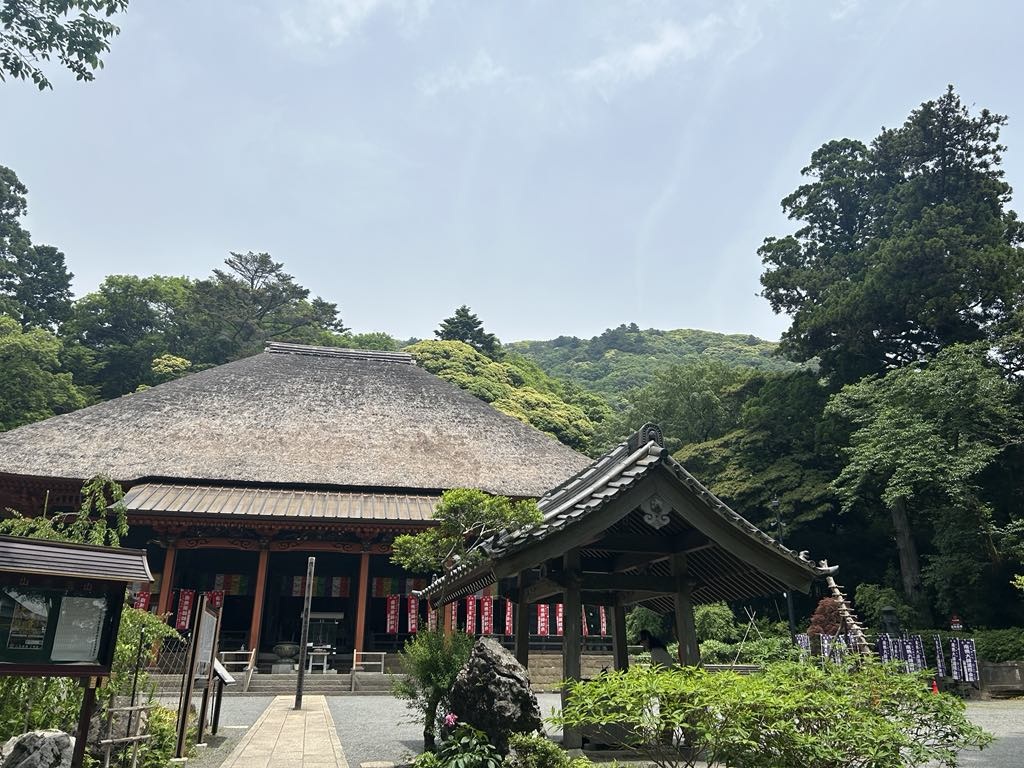
We also had the opportunity to see the Treasure Hall next door, and were overwhelmed by the standing and seated statues lined up in a small space.
The temple houses a seated statue of Yakushi Nyorai, standing statues of Nikko and Gakko Bodhisattvas, a seated statue of Amida Nyorai, standing statues of the Four Heavenly Kings, and standing statues of the Twelve Heavenly Generals.All of these were made in the Kamakura period and are designated Important Cultural Properties.It is a must-see as you will never be able to see them up close like this.
I left Hyuga feeling awe at this sacred place of prayer and a wonderful experience. I would definitely like to return someday.
Hitoshi Nakamura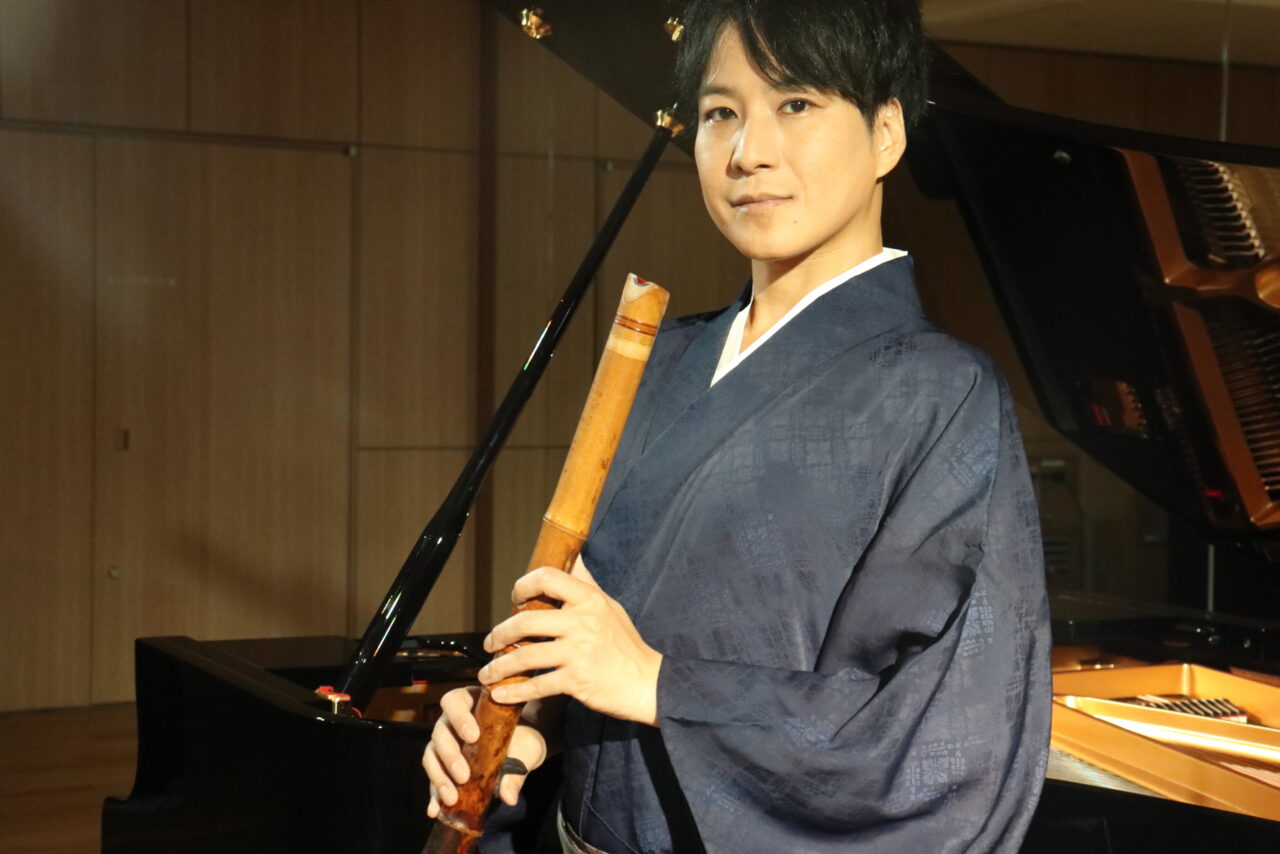
(An example of an important cultural property in Hinata Yakushi)
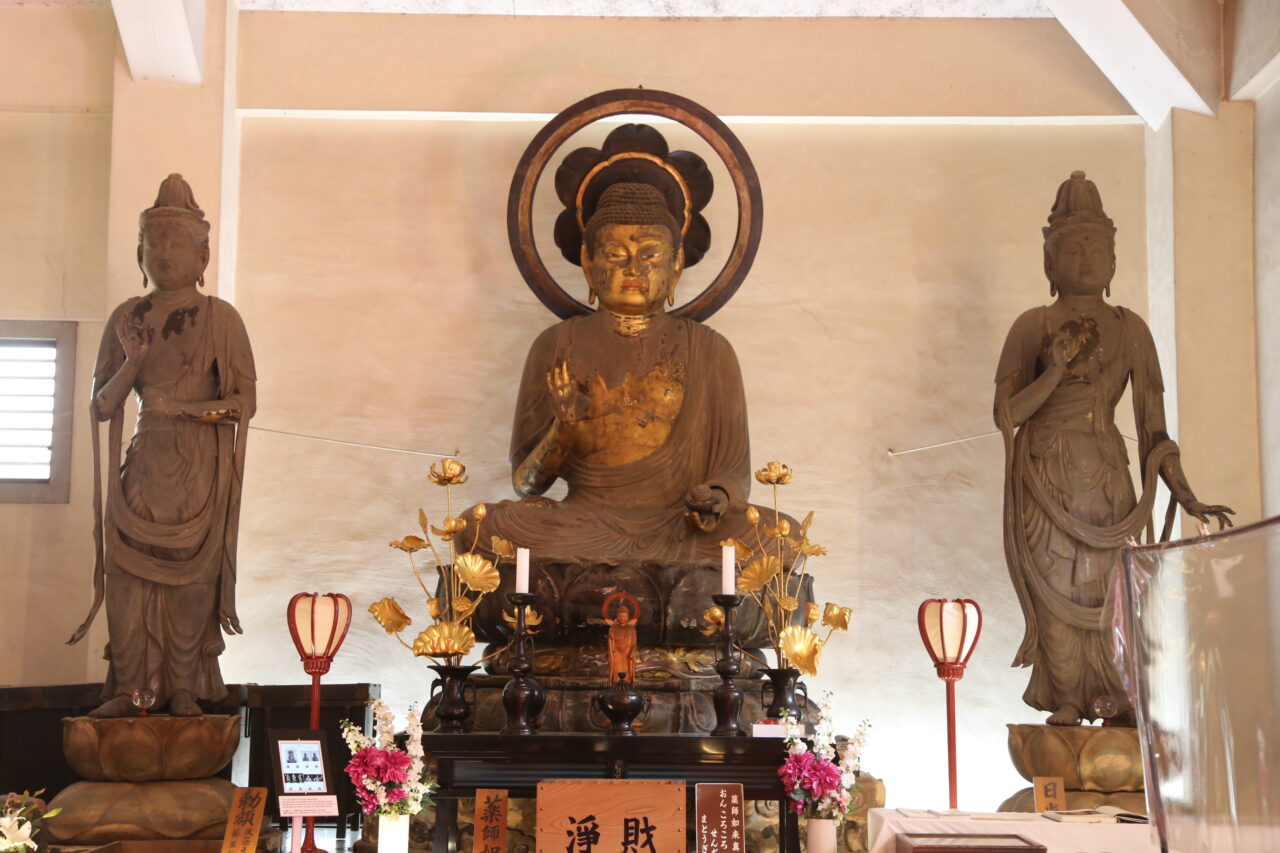
Joroku Wooden statues of Yakushi Nyorai and his attendants
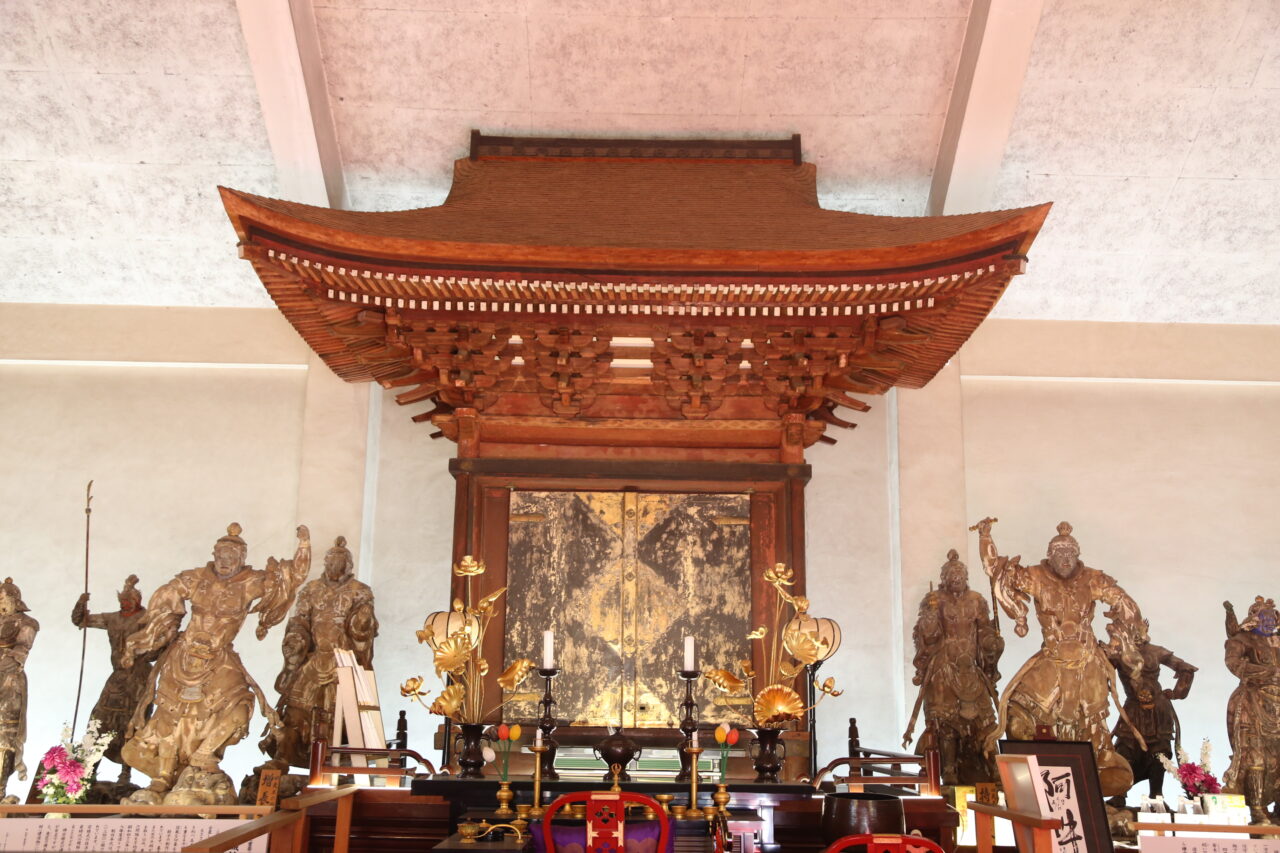
The oldest Zen temple in Japan, Hojobo’s former main hall
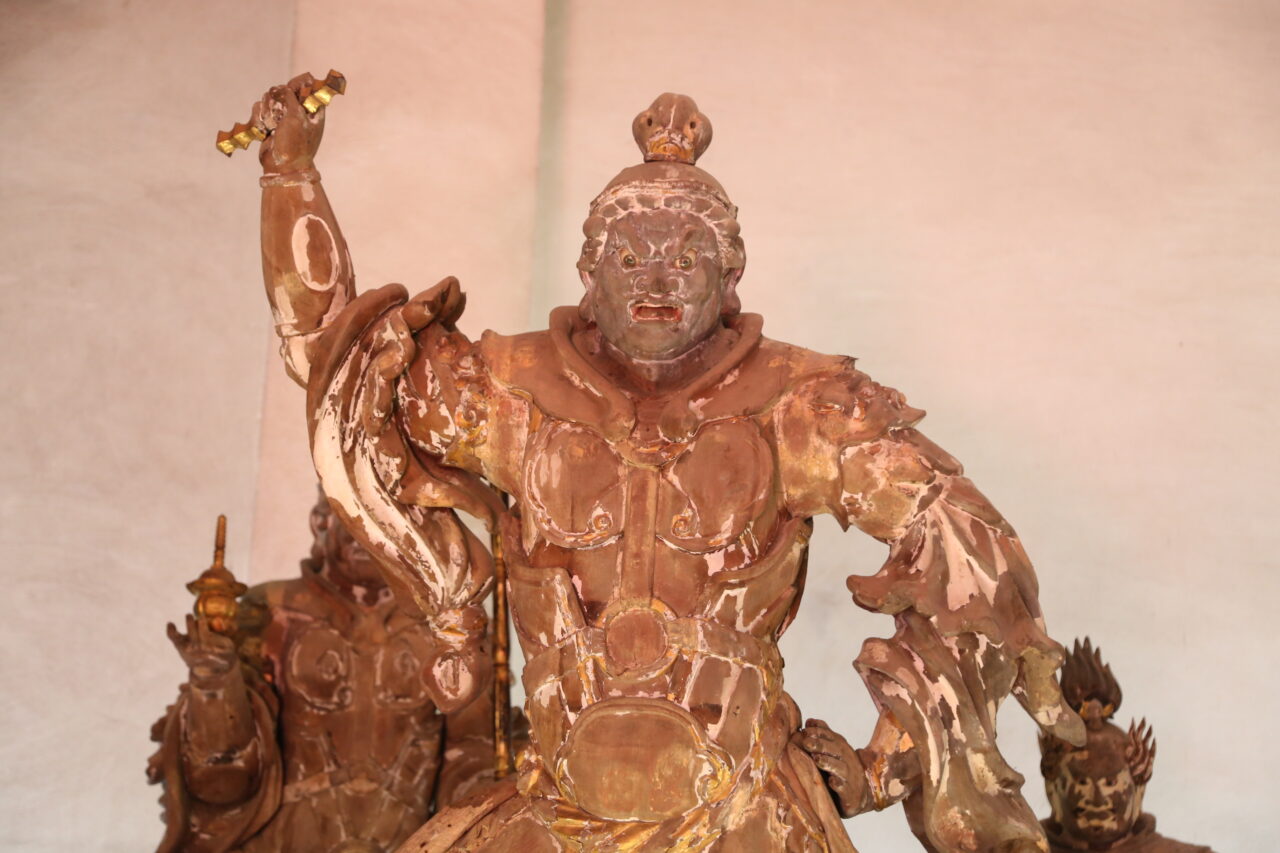
Wooden standing statues of the Four Heavenly Kings, guardians of the four directions
Hinatayama Hojobo Hinatayakushi
Japan’s Three Medicine Masters, Koyasan Shingon Sect
1644 Hyuga, Isehara City, Kanagawa Prefecture, 259-1101
Tel: 0463-95-1416
Nakamura Hideki concert information
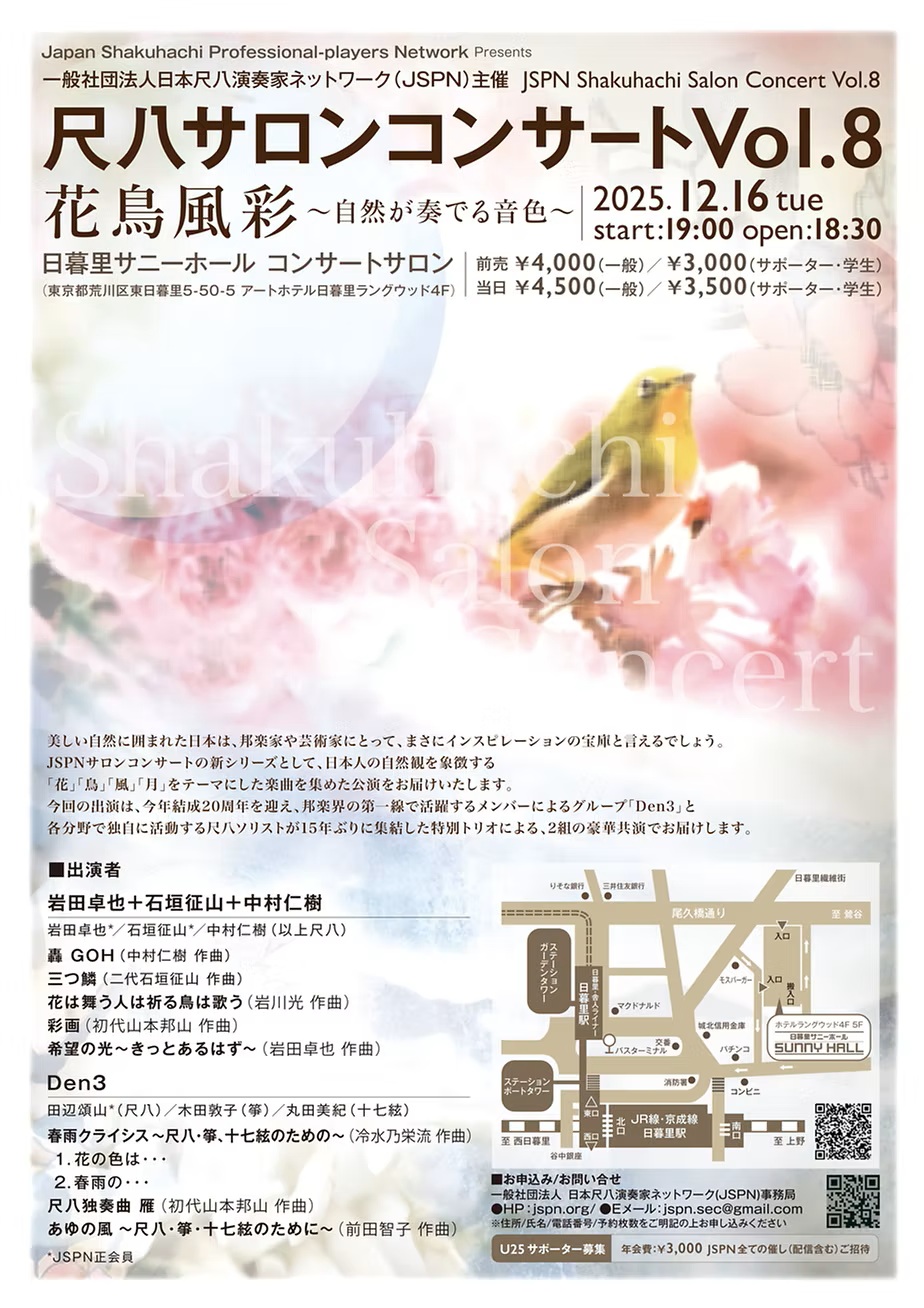
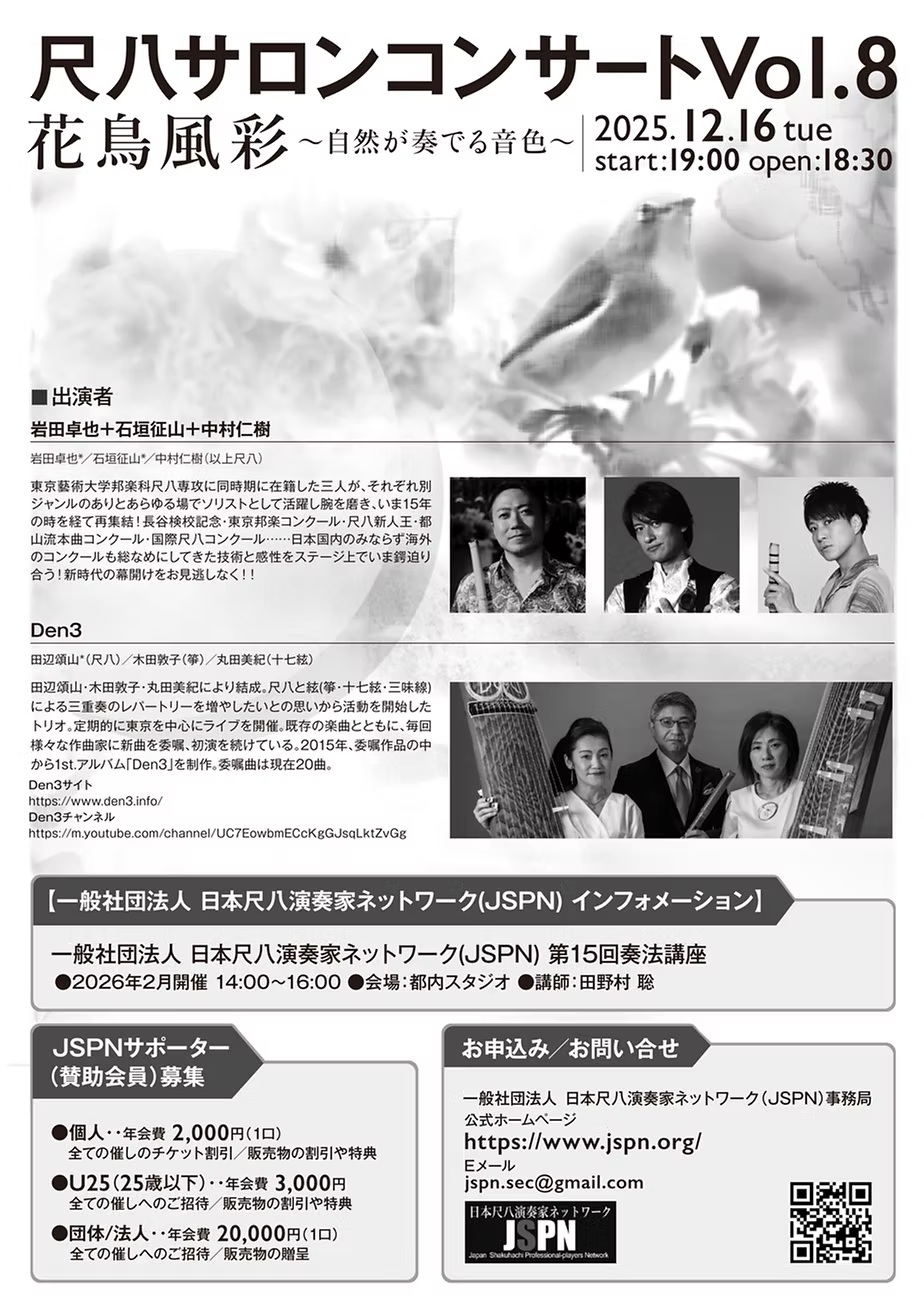
Japan Shakuhachi Professional-players Network Presents
Organized by the Japan Shakuhachi Performers Network (JSPN)
JSPN Shakuhachi Salon Concert Vol.8
Shakuhachi Salon Concert Vol.8
flower and bird style
~The sounds of nature~
For details, please refer to the following page. (External link)






コメント